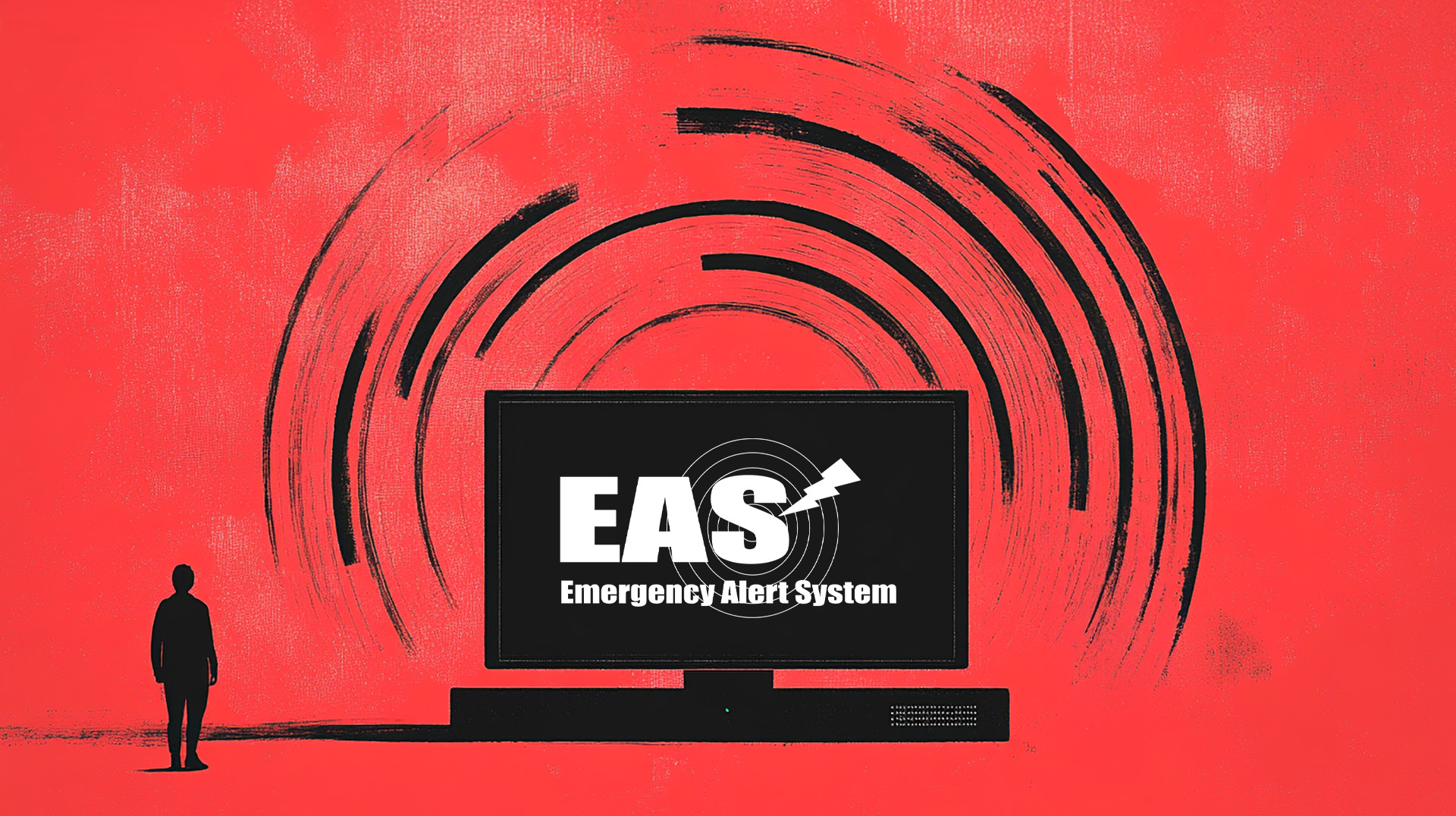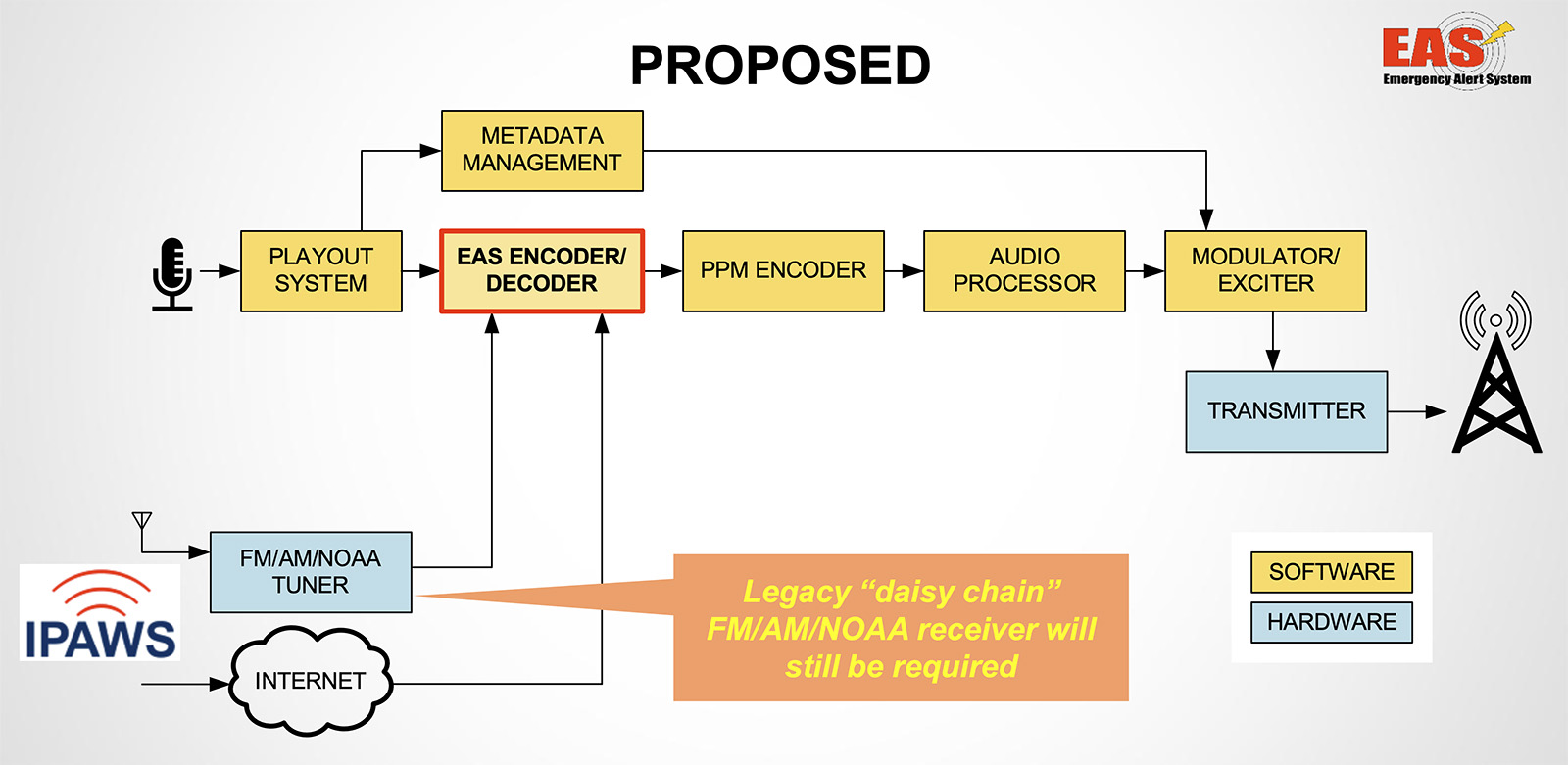Broadcast industry split on Emergency Alert System modernization plan

Subscribe to NCS for the latest news, project case studies and product announcements in broadcast technology, creative design and engineering delivered to your inbox.
The future of the Emergency Alert System looks software-focused as one of two major hardware suppliers exits the market and the industry pushes the FCC to move away from physical devices.
The National Association of Broadcasters has petitioned the Federal Communications Commission to modify rules requiring dedicated hardware encoder/decoder devices for processing emergency alerts. The request takes on new urgency following Sage Alerting Systems’ decision to cease production of its hardware devices, citing supply chain challenges in obtaining legacy components.
“The current legacy ecosystem is not sustainable,” the NAB stated in its petition to the FCC, filed March 31. Sage serves approximately 90% of radio stations, all Primary Entry Point stations and many television and cable providers, according to the broadcaster group’s presentation materials.
The proposed software-based approach would allow emergency alert functions to run on existing broadcast hardware platforms rather than requiring dedicated physical boxes.
This shift mirrors broader technology trends in broadcasting, where software has largely replaced purpose-built hardware across most operational areas.
“EAS is the last link in modern broadcast air chains that remains stuck in a hardware world,” the NAB argued in its reply comments filed in May.
Modernization benefits and architecture
According to NAB’s July 1 filing to the commission, allowing software-based emergency alert solutions would deliver significant operational improvements beyond simply addressing supply chain issues. The proposed system would “greatly improve EAS resiliency and operational readiness” by eliminating downtime for equipment repairs and reducing the time needed to implement security patches.
The software approach would enable immediate failover to redundant systems in diverse geographic locations during disasters, addressing a critical vulnerability in current hardware-based installations. Many broadcasters have been forced to evacuate facilities during environmental emergencies, abandoning their physical EAS equipment when emergency messaging becomes most crucial.
The NAB presentation outlined how software systems would “enhance near-real time automated system monitoring” and “increase ability to manage and route messages to different broadcast audio and video streams,” including analog AM/FM and HD Radio multicast channels.
Under the proposed architecture, the EAS encoder/decoder function would move from its current position between digital-to-analog and analog-to-digital converters to integrate directly into the playout system. However, legacy FM/AM/NOAA radio receivers would still be required to maintain the existing “daisy chain” alert distribution network.

The NAB emphasized three guiding principles for implementation: the approach must be voluntary for EAS participants, maintain backward and forward compatibility with existing systems and not reduce EAS security.
Regulatory alignment and industry support
The NAB framed its proposal as supporting the FCC’s “Delete, Delete, Delete” proceeding, which seeks to eliminate outdated regulations that impede technological innovation. The broadcaster group argues that EAS rules haven’t been significantly updated since 1994, making them “unnecessary or inappropriate” given marketplace and technological changes.
“Allowing software-based EAS model would facilitate and encourage American firms’ investment in modernizing their networks and offering innovative and advanced capabilities,” the NAB stated in its presentation materials.
The proposal has garnered support across multiple industry sectors. Comments filed with the FCC demonstrate backing from radio, television and cable/MVPD operators and the Society of Broadcast Engineers.
However, significant opposition has emerged from other quarters.
Digital Alert Systems, the remaining major hardware vendor, has raised questions about certification requirements, cybersecurity protocols and implementation complexity.
“We have encountered what amounts to a zero-sum, ‘our way or the highway’ posture,” Digital Alert Systems wrote in reply comments. “Rather than inviting collaboration, we are disappointed to see that any critique is being positioned as an obstacle.”
Technical concerns and implementation challenges
The Broadcast Warning Working Group, which includes state emergency communications committee leaders, has expressed deep reservations about the rapid transition timeline. The group argues the proposal lacks sufficient industry consultation and clear certification standards.
“This petition appears to have been developed without consultation with the State Emergency Communications Committees, State Broadcast Associations, or the broader broadcast engineering and EAS participant communities,” the group stated in reply comments.
The working group raised concerns about cybersecurity burdens for smaller broadcasters who lack dedicated IT staff, noting that “shifting the responsibility for keeping EAS platforms patched, secure and compliant onto these operators is not a reasonable tradeoff.”
Technical questions remain about how software-based systems would meet current FCC certification requirements designed for physical devices. The existing rules specify environmental, audio and data standards that may not directly translate to software implementations.
Digital Alert Systems has also flagged potential intellectual property concerns, noting “several published patents and provisional patents that appear to cover key aspects of the software-based EAS model under discussion.”
Despite discontinuing hardware production, Sage Alerting Systems has expressed support for the software transition.
“The time for a software-only option has come,” Harold Price, president of Sage Alerting Systems, stated in the company’s comments.
Supply chain urgency drives timeline
The NAB presentation emphasized the marketplace urgency created by Sage’s exit from hardware manufacturing. The company’s decision leaves Digital Alert Systems as the primary source for new emergency alert devices, potentially creating supply constraints as existing equipment ages out.
The NAB argues that software-based systems would “help avoid supply-chain problems” by inviting “alternative software models not dependent on supply chain” issues that have plagued legacy hardware designs.
The proposal would also facilitate EAS upgrades and enhancements, including multilingual alerts that the FCC is separately considering in other proceedings.
The commission has not indicated when it might act on the NAB petition or whether it will initiate a formal rulemaking proceeding. According to NAB communications with commission staff, FEMA’s Integrated Public Alert and Warning Systems office has reportedly endorsed the software approach.
The NAB concluded its recent presentation by asserting that the proposal “is appropriate for prompt FCC consideration” and that “a voluntary software-based model will benefit the public, FCC, and EAS participants.”
The outcome of this regulatory debate will likely determine whether the emergency alert system successfully transitions to modern software architectures or remains tethered to aging hardware platforms with increasingly limited supplier support.
Subscribe to NCS for the latest news, project case studies and product announcements in broadcast technology, creative design and engineering delivered to your inbox.







tags
Digital Alert Systems, Emergency Alert System, FCC, NAB, Sage, SBE
categories
Broadcast Engineering, Broadcast Industry News, Encoders, Heroes, Policy